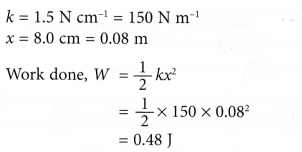


The unnecessary values appear zero by default in the calculator.Īlso, you can insert the values of work and find the values of a certain coordinate or force. Now in this unit, a second equation has been introduced for calculating the force of gravity with which an object is attracted to the earth. To convert from N into units in the left column divide by the value in the right column or, multiply by the reciprocal, 1/x. Physics Work Calculator for 3 Directional Movement Input a (Force, F)ģ Directional Movement Calculations and Results To simply convert from any unit into newtons, for example, from 20 kilogram-force, just multiply by the conversion value in the right column in the table below. This is a very diverse work calculator that covers most of your equation needs. You can also change the unit of work for output and convert the work units as required. The 3D Motion Work Calculator can take inputs in a mixed units and produce the work calculation in a single standardised unit that you can select. We provide details of the Work Formula used and some details to refresh your memory and support accurate calculations using this tool Types of Energy though it can be used as a stand alone calculator to help check homework, and assignment or Physics work computations for accuracy. Whether the local g goes up or down with surface altitude depends on how dense the Earth's crust is in that area.Īfter you calculate the difference in local gravitational acceleration between the United States and Argentina, let us know if you think of any ways it might affect the people living there.The 3D Motion Work Calculator is provided in support of our Physics Tutorial: Work and Energy. The effect of changes in altitude due to actual elevation of the land is more complicated, because in addition to raising you farther from the center of the Earth the land also provides an additional source of gravity. g 0 is the standard gravitational acceleration (9.80665 m/s 2).That equation assumes you're at sea level, but if you want to account for the effect of altitude when you go up in a plane you can use this additional equation: (To get the gravitational force, also called weight, multiply g by the mass of the object you're interested in. You can use this to find the apparent value of g at a location in the United States or in Argentina. lat = latitude, between −90 and 90 degrees.Calculate the time required to reach the maximum height: it corresponds to the time at which v 0, and it is equal to t v/g 3.21 / 9. The relationship is such that if any two of the four variables are known, the other two can be calculated.


You can use the following equation to calculate g at a certain latitude, accounting for both of these effects: Start from the equation for the vertical motion of the projectile: y v × t - g × t² / 2, where v is the initial vertical speed equal to v v × sin () 5 × sin (40°) 3.21 m/s. There is a mathematical relationship between frequency, displacement, velocity, and acceleration for sinusoidal motion when considering their peak values. Together, the centrifugal effect and the center of mass distance reduce g by about 0.53% at the equator compared to the poles. The centrifugal force points directly opposite the gravitational force at the equator, and is zero at the poles. Second, the rotation of the Earth causes an apparent centrifugal force which points away from the axis of rotation, and this force can reduce the apparent gravitational force (although it doesn't actually affect the attraction between two masses). This effect alone causes the gravitational acceleration to be about 0.18% less at the equator than at the poles. The distance between the centers of mass of two objects affects the gravitational force between them, so the force of gravity on an object is smaller at the equator compared to the poles. First, the Earth is not a perfect sphere-it's slightly flattened at the poles and bulges out near the equator, so points near the equator are farther from the center of mass. The Texas Motor Speedway has 24-degree banking in the turns. How can the car stay on the track under this kind of force It's because of the banked turns. 151 / 32 4.74 Gs experienced by the drivers. The acceleration due to gravity (1 G) is 32 f/s2. The variation in apparent gravitational acceleration ( g) at different locations on Earth is caused by two things (as you implied). (337 f/s)2 / 750 feet approximately 151 f/s2.



 0 kommentar(er)
0 kommentar(er)
